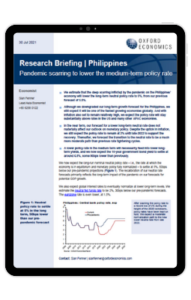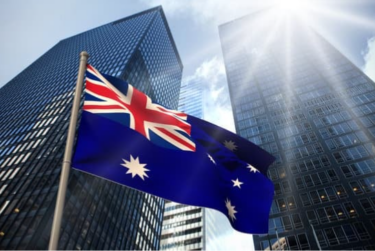Philippines | Pandemic scarring to lower the medium-term policy rate

We now expect the long-run nominal neutral policy rate – i.e., the rate at which the economy is in equilibrium and monetary policy fully normalized – to settle at 5%, 50bps below our pre-pandemic projections. The recalibration of our neutral rate forecasts primarily reflects the long-term impact of the pandemic on our forecasts for potential GDP growth.
What you will learn from this report:
- We estimate that the deep scarring inflicted by the pandemic on the Philippines’ economy will lower the long-term neutral policy rate to 5%, from our previous forecast of 5.5%.
- Although we downgraded our long-term growth forecast for the Philippines, we still expect it will be one of the fastest growing economies globally. And with inflation also set to remain relatively high, we expect the policy rate will stay substantially above rates in the US and many other APAC economies.
- In the near term, our forecast for a lower long-term neutral rate does not materially affect our outlook on monetary policy. Despite the uptick in inflation, we still expect the policy rate to remain at 2% until late-2022 to support the recovery. Thereafter, we forecast the transition to the neutral rate to be a much more moderate path than previous rate tightening cycles.
- A lower policy rate in the medium term will necessarily feed into lower long-term yields, and we now expect the 10-year government bond yield to settle at around 6.8%, some 80bps lower than previously.
Tags:
Related Services

Post
Liberation day’ a headwind, but won’t derail Australian economy
US President Trump has announced a new tranche of 'reciprocal' tariffs, establishing a 10% minimum tariff on all trading partners, and a considerably larger escalation for several economies in the Asia-Pacific region.
Find Out More
Post
Liberation Day’ tariffs will slow construction rebound
The US will impose a minimum 10% tariff on all trading partners from April 5. Several economies will face larger tariffs from April 9 - some as high as 49%. Some products including steel and aluminium will remain subject to their own fixed tariffs.
Find Out More